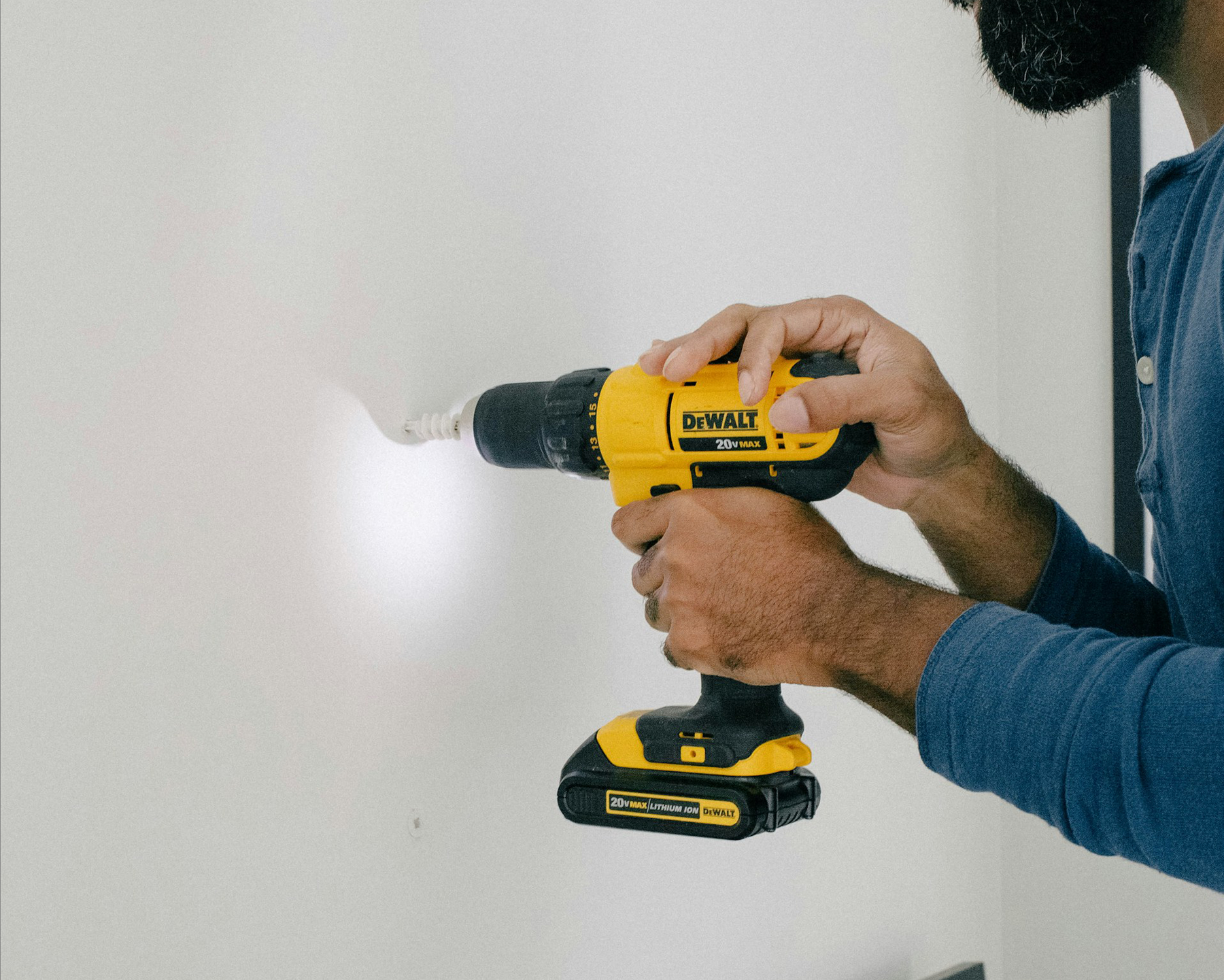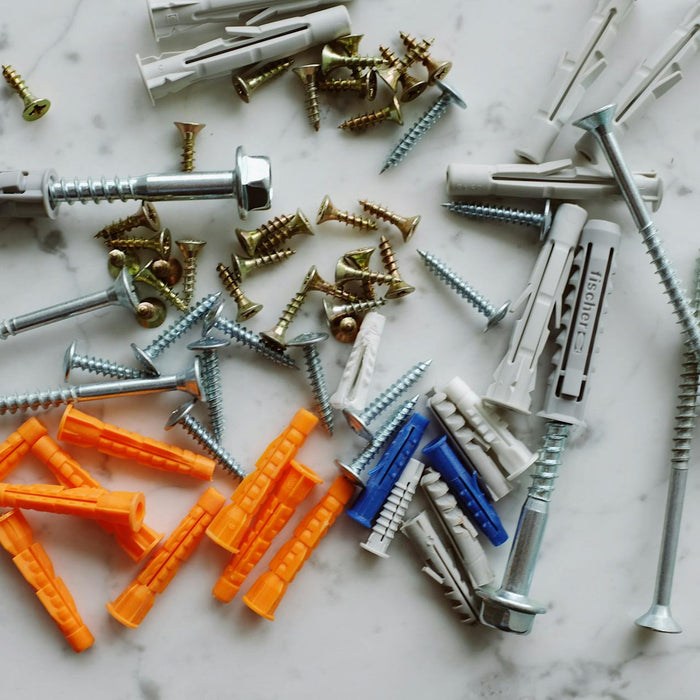

Choosing the right wall fixings
Choosing the right wall fixings is essential for securely hanging objects on various types of walls, whether it's drywall, plaster, brick, or concrete. Here's a comprehensive buying guide to help you select the best wall fixings for your needs.
Determine your wall type
Before purchasing wall fixings, identify the type of wall you'll be mounting items on. Common wall materials include drywall, plaster, brick, concrete, and wood paneling.
Consider weight capacity
Determine the weight of the item(s) you'll be hanging and choose wall fixings that can support that weight. Most packaging will indicate the maximum weight capacity of the fixings.
Choose the right type of fixing
- Plastic wall plugs: Suitable for lightweight items on drywall or plaster. They expand as screws are driven into them, providing a secure anchor.
- Toggle bolts: Ideal for heavier items on drywall. Toggle bolts feature spring-loaded wings that expand behind the wall for increased stability.
- Screw-In anchors: Perfect for medium-weight items on plaster or drywall. These anchors have a spiral design that grips the wall securely.
- Masonry anchors: Designed for use on brick or concrete walls. They come in various styles, including sleeve anchors, wedge anchors, and expansion anchors.
- Self-drilling anchors: Suitable for lightweight to medium-weight items on plasterboard or drywall. These anchors have a sharp point that allows them to be drilled directly into the wall without pre-drilling.
Consider installation method
Some wall fixings require pre-drilling, while others can be directly screwed into the wall. Choose a fixing method that aligns with your skill level and the tools you have available.
Pay attention to packaging
Check the packaging for specific instructions on installation and weight capacity. Some fixings may require special tools or techniques for proper installation.
Choose the right size
Ensure that the size of the wall fixing matches the size of the screws or bolts you'll be using. Using the correct size will ensure a secure and stable anchor point.
Quantity
Consider how many wall fixings you'll need for your project. It's always a good idea to have extras on hand in case of mistakes or unexpected issues.
Test before hanging
Before hanging heavy or valuable items, test the strength of the wall fixings by applying pressure or a slight tug. This will ensure that they are securely anchored to the wall.
Seek professional advice if needed
If you're unsure about which wall fixings to use or how to install them properly, consult with a hardware store employee or a professional handyman for guidance.
By following these tips, you can select the right wall fixings for your project and ensure that your items are securely mounted to the wall, providing peace of mind and preventing accidents or damage.
Blog posts
-
 Electrical sockets come in two main types: surface-mounted and flush-mounted. While surface-mounting is simpler, flush-mounted sockets offer a sleeker appearance and greater resistance to accidental damage. To fit and replace electric sockets in the UK, follow these general steps.Read now
Electrical sockets come in two main types: surface-mounted and flush-mounted. While surface-mounting is simpler, flush-mounted sockets offer a sleeker appearance and greater resistance to accidental damage. To fit and replace electric sockets in the UK, follow these general steps.Read now -

What nails, screws and fixings do I need?
Read nowNavigating the world of nails, screws, and wall plugs can be daunting, but fear not! Our comprehensive buying guide is here to help you make informed decisions for your DIY projects. Whether you're hanging a picture frame or embarking on a full-scale renovation, choosing the right fasteners is crucial for success.
-

Garage storage ideas
Here are some creative and practical garage storage ideas to help you maximise space and keep your garage organised.Read now


